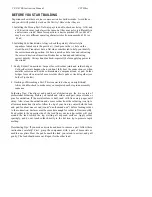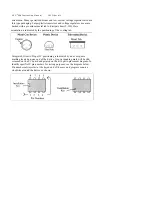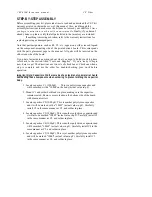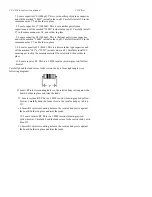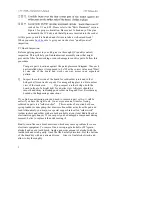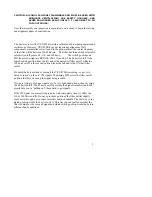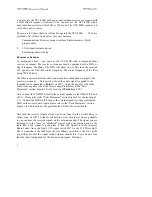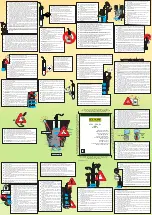
sockets for U 1 and U2. Please refer to the "Parts Placement" section.
Figure 1 for proper orientation. Be sure not to bend any of the pins
underneath the IC body, and that all pins are inserted into the socket.
At this point, your kit is finished and it's time to take a well-earned break!
When you come
back. be
sure to give your work a close "quality control"
inspection.
PC Board Inspection:
Before applying power to your kit, give it a thorough QC (quality control)
inspection. This xyill help you find inadvertent assembly errors that might
prevent the filter from working or cause damage to sensitive parts. Follow this
procedure:
Compare parts locations against the parts-placement diagram. Was each
part installed where it is supposed to be? Was the correct value used? Start
at one side of the board and work your way across in an organized
pattern.
I]
Inspect the solder side of the board for cold-solder joints and solder
bridges betNycen tracks or pads. Use a magnifying glass to obtain a clear
view of the track area.
If you suspect a solder bridge, hold the
board in front of a bright light for a better view. All joints should be
smooth and shiny. indicating good solder wetting and flow. Resolder any
beaded or dullappearing connections.
If you find a construction error and need to remove a part or two, it will be
easier if you have the right tools. One very convenient item for freeing
soldered-in parts is a "solder sucker".
This consists of a suction bulb or a
spring loaded vacuum pump that draws molten solder away from the pad and
lead. Alternatively. you may use a special copper braid called "solder wick"
(solder suckers and solder wick are both available at your local Radio Shack or
electronics supply house). If you suspect you've damaged a component during
removal, better to replace it than risk reusing it!
Finally, rosin flux can absorb moisture, which may cause a problem for some
electronic equipment. To remove flux, use isopropyl alcohol (or 95% grain
alcohol) and an old toothbrush. Apply a generous amount of alcohol with the
toothbrush and scrub gently. Once the flux has fully dissolved, blot the bottom
of the board dry with an untreated tissue.
Give it a final alcohol wash, and
allow to dry thoroughly.
1




